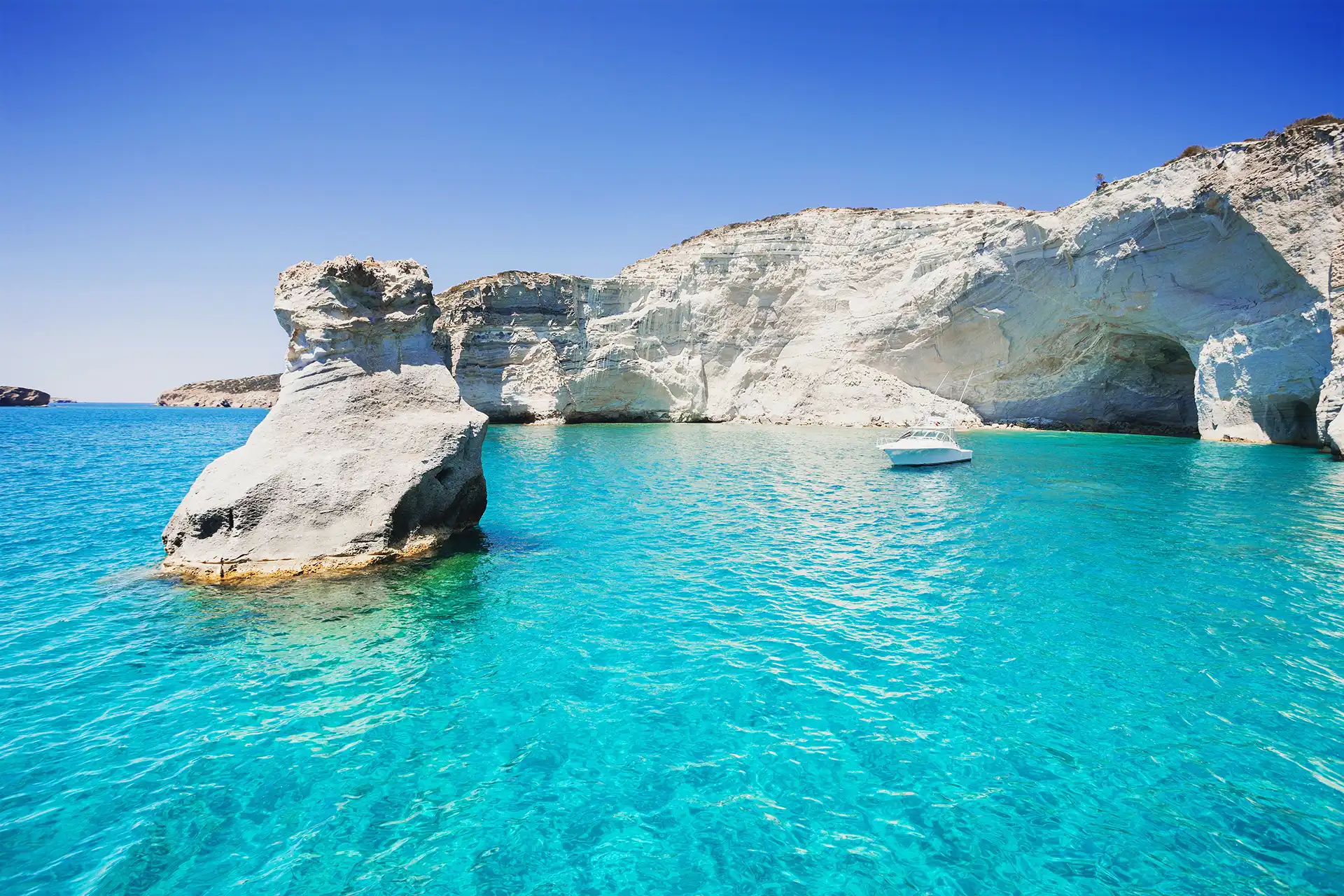If you’re seeking an awe-inspiring destination with unparalleled beauty surrounding every corner, look no further than Milos Island. Nestled in the heart of the Aegean Sea between two magnificent islands – Serifos and Kimolos – Milos boasts exceptional rock formations, breathtaking beaches, captivating villages, museums worth exploring and significant archeological sites. With a population of around 5,000 individuals and spanning across a total area of 160 square kilometers, Milos is an island known for its Mediterranean weather that comprises hot and dry summers as well as mild and wet winters.
Although it’s noteworthy that the island’s strong winds could make swimming difficult at times, these very conditions are what makes kitesurfing and windsurfing popular activities for visitors to indulge in. The capital city of the island is Plaka – a picturesque village that provides stunning sights of the Aegean Sea. Milos boasts of breathtaking natural landscapes including over 70 beaches, each with its unique atmosphere.
Milos Beaches

Sarakiniko, one of the most iconic beaches, is renowned for its lunar-like surface that resulted from the erosion of volcanic rock. The beach features a stunning combination of milky white rocks and clear Aegean waters, attracting visitors who enjoy swimming, sunbathing or snorkeling. Tucked away in a small cove surrounded by towering cliffs lies Tsigrado- one of the most breathtaking beaches on the island.
If seclusion and intimacy are what you seek, this pristine haven accessible only via narrow staircases might just do it for you. On the other hand, Firiplaka – located on the southern coast of the island boasts longer spans of sandy beach kissed by turquoise waters that perfectly align with avid enthusiasts who enjoy indulging in water activities such as swimming and sun-basking. Tucked away on the southwestern coast of Milos lies Kleftiko, a breathtaking location exhibiting some of the island’s most eye-catching features.
This mesmerizing beach is exclusively accessible by boat and is renowned for its magnificent rocky structures, clear aquamarine waters, and subaquatic caves that attract numerous diving and snorkeling enthusiasts. Beyond its bustling beaches, Milos flaunts an abundance of stunning natural landscapes; one such wonder includes the Syrmata- carved volcanic rock houses of local fishermen. Uncovering Milos’ captivating past is within reach for visitors intrigued by ancient civilizations.
This Greek Island brims with historical significance through its archeological sites from different periods – Cycladic to Hellenistic to Roman – as well as charming churches and informative museums. One museum worth visiting is the Milos Archeological Museum featuring rare findings. A visit to Milos Island wouldn’t be complete without exploring two key attractions – the museum showcasing ancient relics such as pottery and sculptures along with other unique artifacts, and the pristine remains of an ancient Greek theater dating back more than two millennia.
Hearing sounds echoing within these historic stone walls will leave tourists spellbound while providing stunning vistas of sparkling blue waters extending beyond horizon’s reach. The rich history of Milos contributes immensely towards making this destination so captivating – it has always been associated with prosperity connected directly to abundant natural resources. Resource-rich and steeped in history, Milos is a fascinating Greek island with a lot to offer.
Its ancient past saw it used as a hub for obsidian and sulfur mining, vital resources for flourishing communities during that time period. The renowned Venus de Milo statue is another testament to this rocky terrain’s importance to art and culture. Fast forward several centuries to when Greece fought against Ottoman Empire occupation; resistance efforts on Milos helped lead other islands to victory.
Milos Island suffered an immense blow in its recent history with the occurrence of a mining disaster in 1979, which resulted in the loss of lives for 13 miners. The event had grave effects on both the island’s economy and its community. Nevertheless, through collective efforts to revive their town, Milos quickly became known as an outstanding holiday spot.
Milos’ festival provides a vibrant display of traditional music, dancing, and feasting for locals and tourists alike. This lively event captures the attention of people from across Greece who flock to this island to take part in the festivities.
Furthermore, during July, people can enjoy another popular festival known as the Fisherman’s Feast. It showcases Milos’ history as a fishing hub through food offerings such as seafood dishes accompanied by enjoyable music and dance performances. August brings along a much-awaited festival on Milos Island – The Feast of the Assumption of the Virgin Mary.
The celebration includes relishing traditional food while enjoying vibrant festivities that include remarkable music and irresistible dancing. What makes this place even more attractive is that it also hosts annual cultural events such as art exhibitions or theatrical performances every year. Milos’ gorgeous natural landscapes, deep-rooted cultural inheritance, and friendly inhabitants serve as compelling reasons why it has become such a favored travel destination throughout Greece.